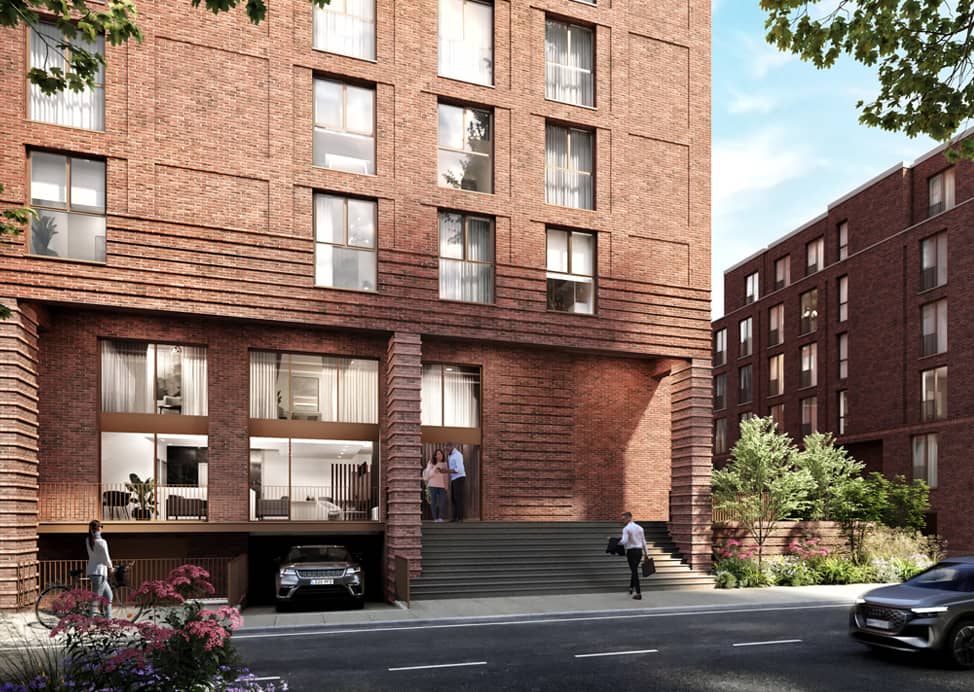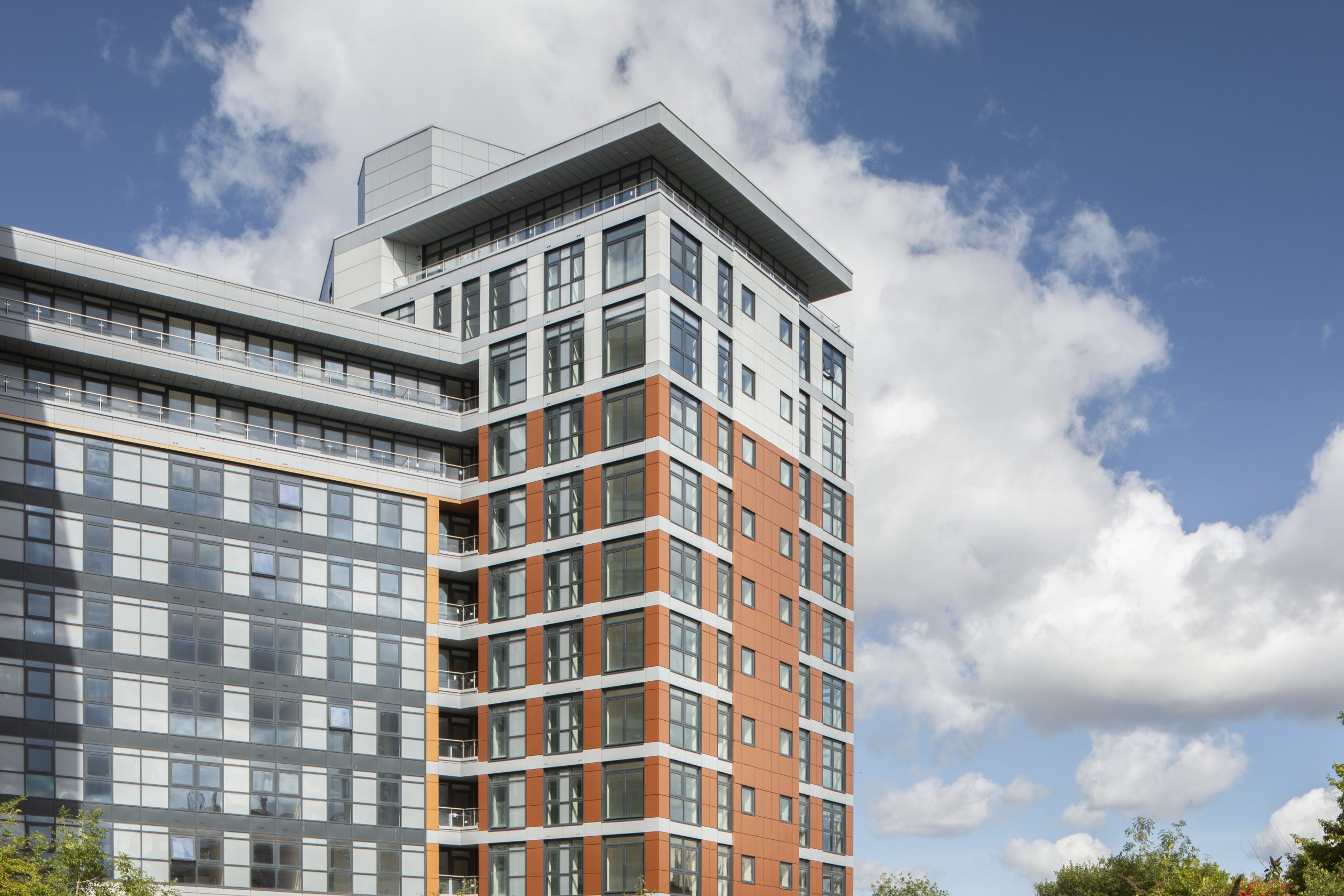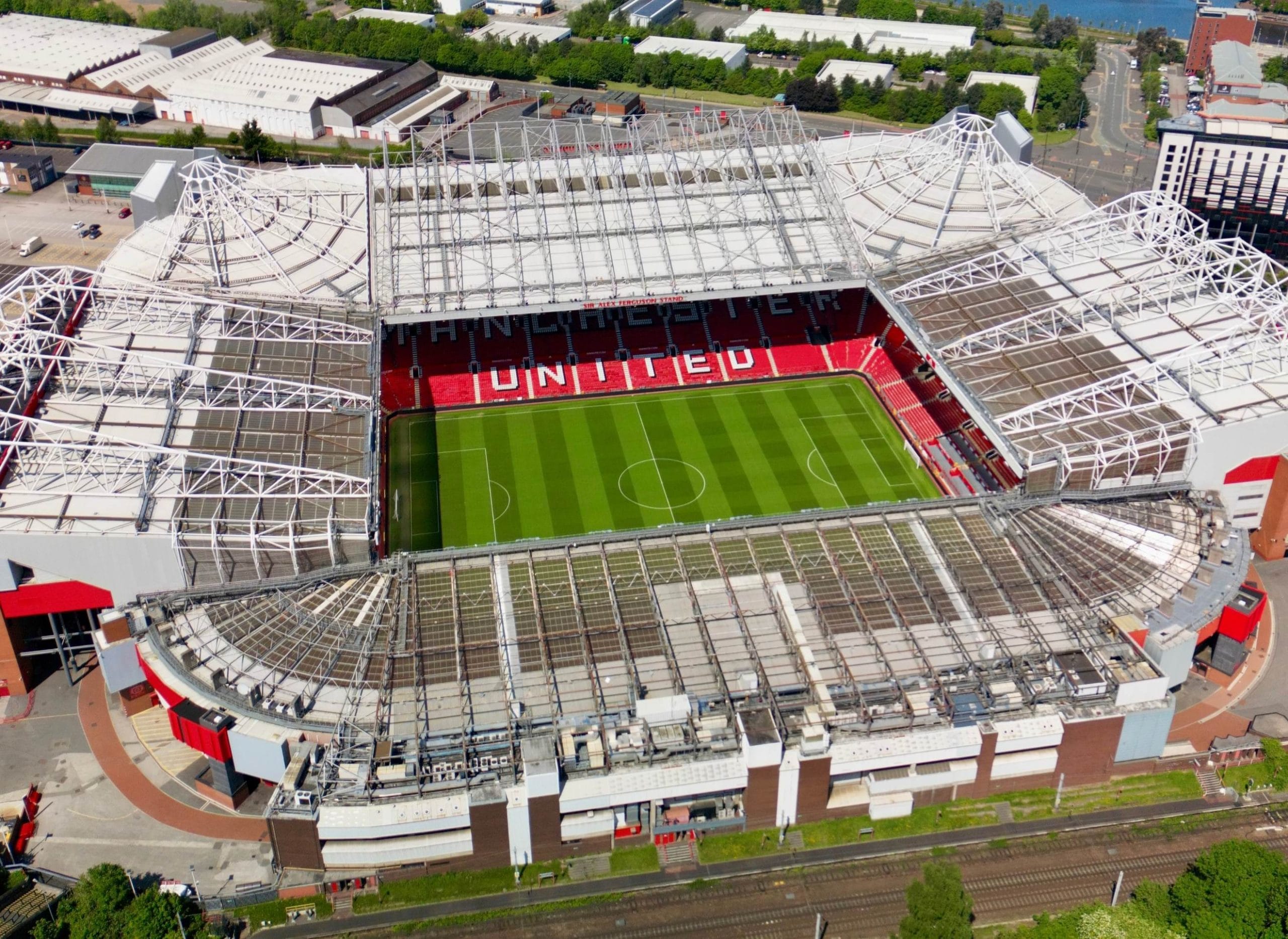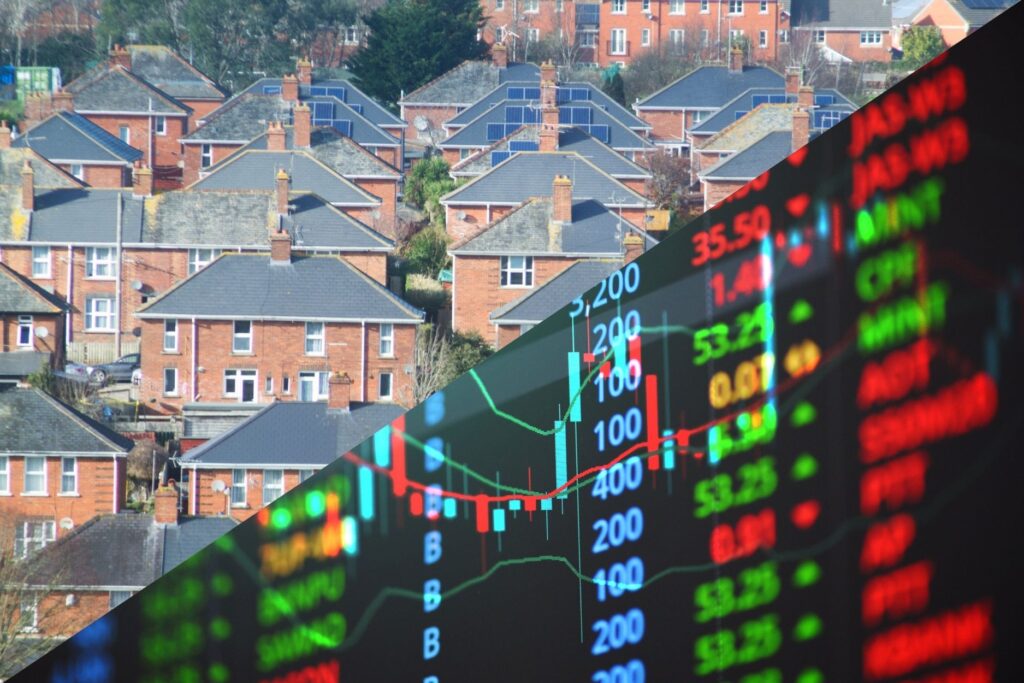Old Trafford in Manchester is set to be transformed by a wave of regeneration projects that promise to make it one of the region’s most attractive neighbourhoods. Recent plans, led by Manchester United’s proposed new stadium and Trafford Council’s Civic Quarter masterplan, are designed to revitalise the area and deliver modern amenities, homes and transport links. These initiatives align with Greater Manchester’s broader growth strategy and are expected to yield “huge returns” for early investors as Old Trafford becomes more desirable. In this article we review the key Trafford regeneration schemes, their impact on infrastructure and community, and what this means for property values, rental yields and investor confidence in 2025.
Major Old Trafford Regeneration Projects
Old Trafford Regeneration: Stadium
The centrepiece is Sir Jim Ratcliffe’s £2 billion plan to build a new 100,000-seat stadium, dubbed the “Wembley of the North,” immediately adjacent to the existing Old Trafford ground. Trafford Council has backed this vision and will simultaneously regenerate the surrounding area. The project will deliver a world-class venue designed by Foster + Partners, featuring improved transport links, a greener design, and public plazas. Once underway, the new stadium is expected to take about five years to complete, creating a national venue that will draw even more visitors.
Civic Quarter Area Action Plan:
A parallel initiative, the Trafford Civic Quarter Masterplan, will bring over 4,000 new homes, two hotels, a primary school, a retail park, and a new mixed-use neighbourhood on the former Greater Manchester Police HQ site. This plan divides Old Trafford into five zones: Trafford Wharf, Heritage Quarter, Stadium District, Innovation Quarter, and Wharfside Heart. Each area is targeted for revitalisation with high-quality housing and improved amenities to make them more attractive to residents and buyers. One example is the Trafford Gardens development, which will deliver 116 apartments in Stretford as part of the Civic Quarter regeneration.
Trafford Regeneration Wharfside Masterplan:
South of the docks, a 45-hectare masterplan will drive economic growth and create a connected waterfront community. Plans include restoring historic railway arches, adding new walking and cycling routes, and building a diverse range of homes along the canal. Public spaces and green areas will also be enhanced to protect local heritage and ecology while re-integrating the waterfront into the wider urban landscape.
Connectivity and Transport:
All the major projects emphasise better connections across the area. Trafford Council has proposed new cycle and pedestrian routes, including a “processional route” from Lancashire County Cricket Club to the Old Trafford stadium, as well as improved links between Trafford Wharfside and Manchester city centre. These upgrades are designed to enhance daily life for residents and support the vision of a well-connected, amenity-rich community.

Prime Trafford apartments: a new apartment development in the Civic Quarter part of the Trafford regeneration. Such projects will provide modern housing and facilities as Old Trafford’s facelift continues.
Infrastructure Improvements and Community Impact
These Trafford regeneration schemes bring major community and infrastructure benefits. The new stadium and mixed-use district, for example, are projected to create around 92,000 new jobs and over 17,000 homes, injecting about £7.3 billion per year into the UK economy. An Oxford Economics report (reported by Manchester United) highlights these figures, and Blooloop news similarly notes 1.8 million extra annual visitors alongside the jobs and homes. Old Trafford already attracts roughly 2.5 million visitors a year, including 226,000 overseas football fans in 2019 (the most of any UK stadium). The new development will amplify this tourism, boosting local shops, restaurants and services.
These projects also deliver direct benefits to the community. For example, the Civic Quarter plans include new schools, parks and retail options that will improve everyday life. The Trafford Gardens development itself is adding 116 quality homes (completed in phases through 2025) very close to Old Trafford Stadium. As the local population grows – Manchester’s population has already jumped from 422,000 to 600,000 since 2001 and is set to rise by another ~60,000 in the next few years, these new amenities and homes are crucial. Local employment is poised to surge as well; CityRise notes 65,000 new jobs in the Old Trafford/Manchester area from all regeneration projects. In short, residents will see better schools, green spaces and services, while businesses benefit from rising footfall and income.
Impact on Property Values, Rental Yields and Investment Confidence
The combined effect of these initiatives is higher property values and stronger rental yields. Regeneration projects like stadiums and new neighbourhoods reliably push up local prices. CityRise emphasises that investing ahead of the Old Trafford regeneration is a strategic move to “maximise capital growth potential” The data bear this out. Greater Manchester property is already outperforming many other markets: average prices in Manchester grew +5.1% year-on-year (v London’s –2.8%). In Trafford specifically, the average house price rose 2.8% to about £365,000 (April 2023–24) and private rents jumped 8.2% to £1,177/month. These gains reflect already-strong demand.
Investors can expect even more upside. New developments show high rental yields: for instance, the Furness Quay scheme in Salford Quays offers returns up to 6%. (Our analysis notes Furness Quay has strong yields and that ongoing area regeneration will drive capital growth.) Manchester’s rental market remains tight, young professionals and students flood in, so yields stay robust. All this means investors can charge premium rents: as more people move in, vacancy rates shrink, which typically pushes rents and prices upward.
With demand far outstripping supply, experts say prices are likely to keep rising. CityRise notes that “demand will rocket” as jobs and population grow, making it “now the perfect time to invest” in Old Trafford. TKPG analyses similarly observe that Manchester’s economy and infrastructure are creating long-term property growth. As one TKPG report concludes, the Old Trafford stadium project is a “catalyst for regeneration” that will drive up values, rents and jobs in the surrounding area. In summary, the combination of major regeneration, strong fundamentals and limited housing stock has boosted investor confidence in Manchester’s property market, especially in Old Trafford and nearby neighbourhoods.

The Furness Quay development in Salford Quays demonstrates the modern waterside housing in high demand. New-built apartments here have offered returns up to 6% as the area sees continued regeneration.
Investor Sentiment and Outlook
Property investors are taking note. The scale of Old Trafford’s makeover – together with wider Northern Powerhouse trends – has made Greater Manchester a magnet for capital. Institutional and overseas buyers are already targeting Manchester for its affordability and growth. In this environment, Old Trafford ticks all the boxes: a known global brand (Manchester United), improved infrastructure (transport links and HS2 on the horizon), and clear planning support. Investor surveys in 2025 show continued optimism about buy-to-let in Manchester, with many considering the Old Trafford projects as major positive catalysts.
Looking ahead, the vision is of a transformed district: a new stadium at its core, surrounded by modern housing, leisure, education and green space. Rental tenants and homeowners alike will benefit from this sustained upgrade. For property investors, it means solid demand and capital growth over the coming decade. In the words of a recent TKPG briefing: “Manchester’s property investment offers a wealth of opportunities… the redevelopment of Old Trafford Football Stadium is set to be a catalyst for the Trafford regeneration, driving up property values, rental demand, and job creation”. The data and expert analyses back this up, underlining that the vision for Old Trafford is very much aligned with the interests of long-term investors.
Conclusion: Trafford regeneration is rapidly reshaping the area into one of Manchester’s hottest investment hotspots. With multi-billion-pound projects underway and councils committed to sustainable, connected development, the neighbourhood is poised for strong gains. Property values and rents are already rising, and investor confidence is high. Professional investors would be wise to monitor these developments and position themselves now, ahead of further progress. For more analysis of Manchester property and regeneration, see the TKPG news section. To discuss specific investment opportunities in Old Trafford or Greater Manchester, please contact us.









